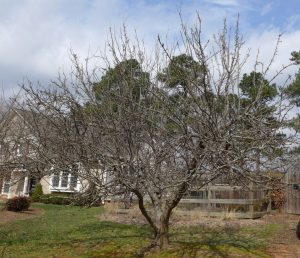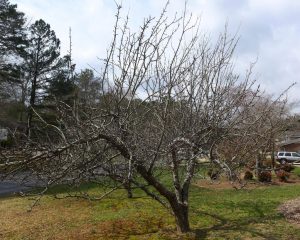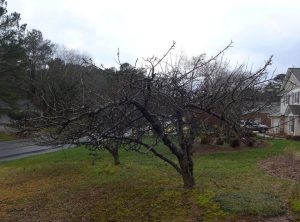I recommend tree removal where there is (or will be) a poor match between the tree and the site it is growing on. What is a poor match? First, consider your land, all the structures on it, and what you desire from your land. Do you want a wooded lot? A large lawn? A vegetable garden? Are the trees you have part of enhancing or protecting those structures and implementing your vision for your land or will they interfere with it? If they interfere, you have a poor match. Do something now to take advantage of Just Small Trees, LLC services, not in 5 or 10 years when the problems are much more expensive to fix.
Remember, well-matched trees increase your enjoyment of your property and your property’s value, while poorly-matched trees do the opposite.
First Glance at Your Trees
Take a walk around your home and property. For trees near your house, look at each tree individually and consider the potential problems below. If you have a large number of trees elsewhere on your property, you can look at them in groups to save time.
Poor Site Problems
- Poorly Located (Damaging): The tree threatens or will threaten structures such as a foundation, patio, or deck due to root flare and trunk growth.
- Poorly Located (Annoying): The tree produces messy fruit, flowers, or leaves that are problem in the current location. Examples are gumballs from sweet gum (Liquidambar styraciflua) in a lawn or fruit from red mulberry (Morus rubra) staining a deck.
- Site Use Interference: The tree shades or will shade a lawn, garden, or other plants. Roots of such a tree will also reduce water available to other plants.
- Construction: The tree’s roots have been destroyed due to soil grading or extensive digging.
Poor Tree Problems
- Diseased or Damaged: The tree is diseased or damaged now and not worth saving or can’t be saved.
- Ugly: Some trees you just don’t like. Remove them now, get relief, and save money in the long run.
- Poor Adaptability: I often cut down black cherry (Prunus serotina) trees from the Wake County area. Why? Despite being a good tree in the NC mountains, this tree grows poorly in the local heat and humidity. Add in eastern tent caterpillars during the summer and you end up with a tree having bad foliage, bad form, and numerous health issues.
- Potential Breakage: Bradford pear (Pyrus calleryana) has ugly, poor branch structure that is prone to ripping the trunk when branches break due to wind or ice. Why wait? Cut it down and replace it with something better.
Removal vs Pruning
If you have a good tree species but the site match is just so-so, pruning is a good option. The most important thing with pruning is to start early in the tree’s life. It is impossible to turn a large, healthy, mature tree into a small, healthy, mature tree. Attempt to do so and you will get a tree that will decline and die over the next several years.
Pruning a good tree is worthwhile. For example, my parents have a large willow oak (Quercus phellos) about 20 feet from their house. At close to 70 feet tall and with a trunk diameter of 3 feet it requires pruning every several years to get branches off the house and roof. Regular pruning, starting years ago, is the only reason this beautiful specimen has been able to safely coexist with their house.
Overall, I don’t recommend pruning to make a tree stay smaller unless you are prepared to invest in yearly pruning of the tree for the entire life of the tree. An example would be an apple tree grown for fruit, a more extreme example a bonsai tree. If you don’t want to prune so often, remove the tree when it’s small and put something better in it’s place.






